Prep: 20 mins
Cook: 25 mins
Tofu Pressing Time: 15 mins
Total: 60 mins
Servings: 4 servings
Savory, slightly sweet, tangy, creamy, and aromatic, this elegant yet easy tofu braise includes every major flavor component. Sweet white miso adds body and a sweet savory depth while sambal oelek contributes tangy, bright heat. Winter citrus adds freshness, and coriander seed mirrors the floral brightness of the orange.
The Technique: Fry, Then Simmer
Frying tofu and then simmering it in a highly seasoned sauce is a traditional Asian technique for creating hearty, flavorful tofu dishes like in Korean dubu jorim. I like the technique of frying tofu and simmering it in seasonings because it is a quick and easy way to introduce lots of texture and flavor without the need for marinating or freezing. I keep tofu in the fridge for an easy, delicious protein that I can prepare like this in minutes.
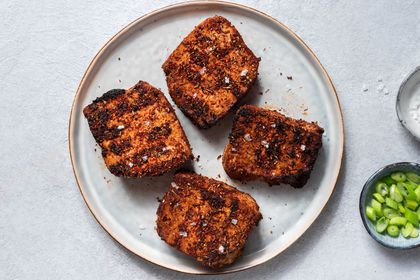
Tips for Making Braised Tofu
- For a smoother sauce—The sliced garlic and ginger add texture and big bites of flavor to the sauce. For a smoother sauce and less impact, grate the garlic and ginger instead.
- Tweak the heat—This sauce is mildly spicy. For less heat add only one teaspoon sambal to begin with, then taste and add more if desired or just pass sambal at the table for diners to add to their own liking.
- Rice flour alternative—The tofu can be fried without rice flour. The texture will be slightly tougher and less crisp, but it will still hold up to being braised in the sauce. Just pat the tofu very dry and fry as instructed in the recipe. All-purpose flour and starches like cornstarch will absorb more of the braising sauce resulting in a different texture in the final product; they aren’t recommended for this application.
- What kind of pan to use—A well-seasoned, heavy steel wok is a natural choice for frying and braising this dish. I use a flat bottom wok made for cooking over home ranges. A well-seasoned cast iron skillet will work too, as will a Dutch oven. The sauce does evaporate more quickly when cooked in the cast iron skillet, so cooking time will have to be adjusted accordingly.
- Test the heat of the oil—To test the heat of shallow cooking oil, place the tip of a wooden chopstick or the handle of a wooden spoon in the oil. When the oil is hot enough to begin cooking, small bubbles will rise rapidly from the wood.
- Avoid oil splatters—When adding food to hot oil, always lower it gently to the surface of the oil, so that the last part to enter the oil is facing away from you. This way if the oil splashes when it enters the oil it will splash away from your hands and body.
- Don't crowd the pan—It’s important not to crowd the pan when frying the tofu. If the tofu touches while frying the pieces will fuse together. If the pan is overcrowded the temperature will drop too low and the tofu will become soggy and oil laden instead of crisp and light.
How to Serve Braised Tofu
This recipe is delicious served with roasted Korean sweet potato and sauteed greens, or with jasmine rice and cucumber salad.
Make Ahead
You can press and slice the tofu a day ahead of time. Keep it refrigerated in an airtight container until ready to use.
"With a nice bit of spice and a pretty color you really get a fun dish out of making this one. Mochiko can be found at most Asian markets and I recommend buying it since there’s plenty of other fun dishes you can make with it.” — Noah Velush-Rogers
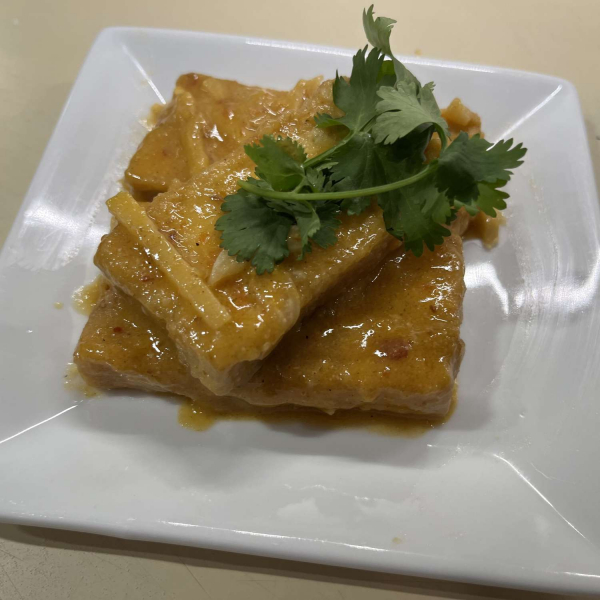
A Note From Our Recipe Tester
Ingredients
-
Two 12-ounce blocks extra-firm tofu, drained
-
2 to 3 tablespoons sweet white rice flour (mochiko)
-
1/2 cup fresh orange juice, from two large oranges
-
1 tablespoon sambal oelek chili paste
-
Neutral oil for frying, like grapeseed oil
-
One 1 1/2 by 1 1/2-inch piece fresh ginger, peeled and cut into matchsticks
-
4 cloves garlic, thinly sliced
-
2 teaspoons ground coriander
-
2 tablespoons white miso paste
-
Orange slices, optional
-
Fresh cilantro sprigs
Steps to Make It
-
Gather the ingredients.
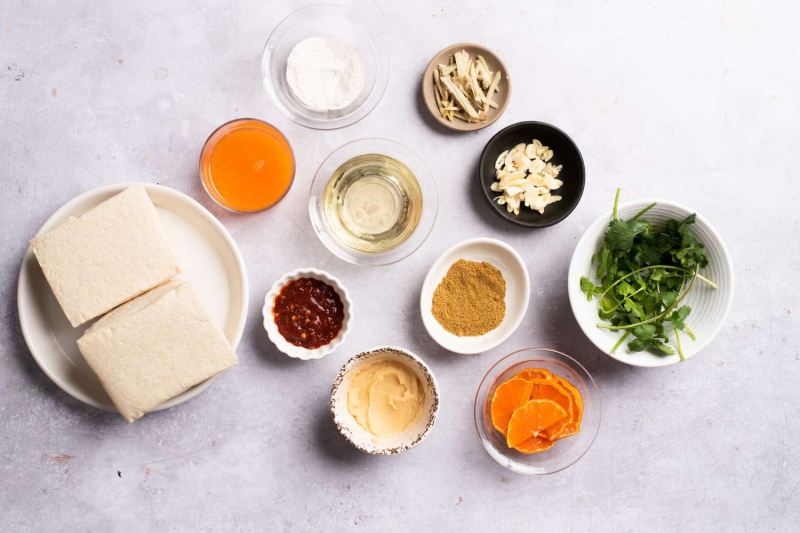
-
Place the blocks of tofu on a plate turned upside down then place another plate right side up on the block of tofu and use a large can or heavy dish to weigh down the top plate. Set the plates in the sink or somewhere the water can drain without making a mess. Press the tofu until the water stops seeping out of the sides, about 15 minutes. If the tofu is pressed too long or with too heavy a weight, it may lose its integrity and fall apart when it is cooked.
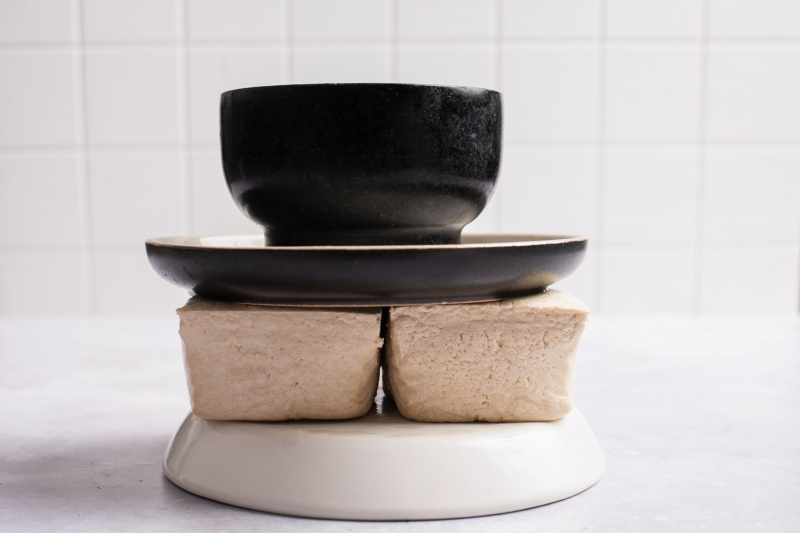
-
After the tofu is drained, blot it dry on a clean kitchen towel or paper towel. Slice the tofu into 1/2-inch-thick pieces, which should yield about 10 pieces per block.
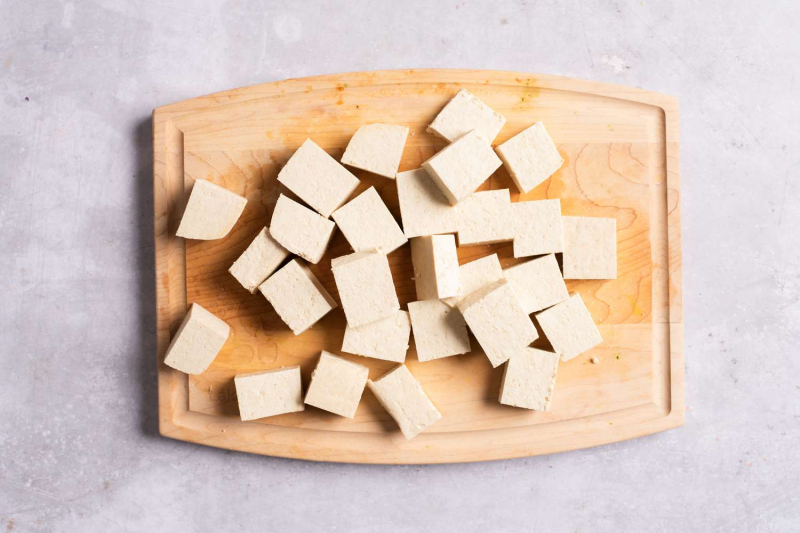
-
Place the rice flour in a small dish and set a rimmed baking sheet large enough to hold all the sliced tofu in a single layer next to the dish.

-
Dredge the tofu in the rice flour one piece at a time. Thinly coat all sides of the tofu with the rice flour. Set the dredged tofu on the baking sheet and continue with the rest of the pieces until they are all coated.
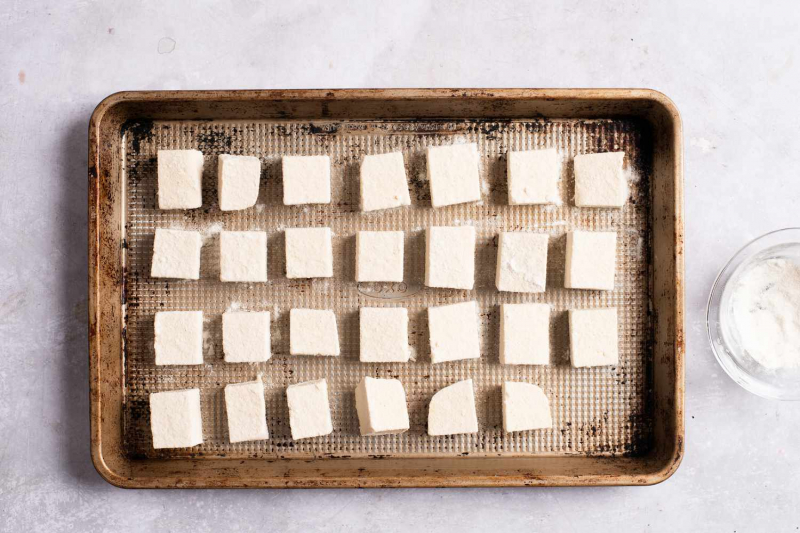
-
Mix the orange juice and sambal together with 1/2 cup water in a liquid measuring cup.
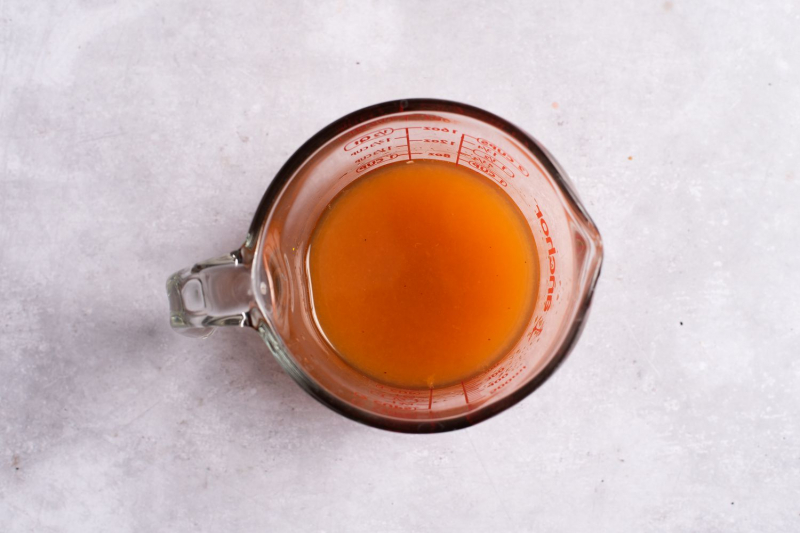
-
Heat a large wok or 10-inch cast iron skillet over medium-high heat. When the pan is hot add enough oil to cover the bottom of the pan 1/2-inch deep. Heat the oil until it begins to shimmer.
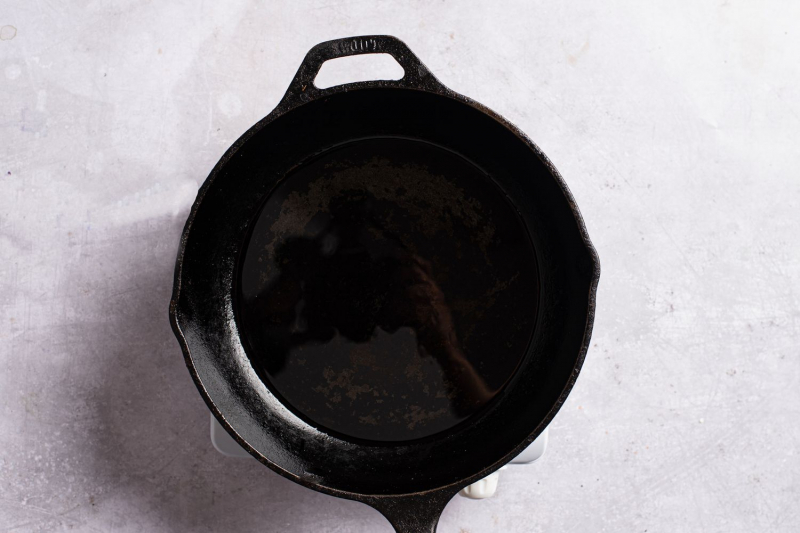
-
Gently place as many pieces of tofu as fit in one layer, without touching, in the hot oil. Fry the tofu without turning, until it is golden and crisp on the first side. A golden color and a rougher texture will begin to show around the edges, and the oil will be visible, slightly bubbling through the tofu’s center as it cooks, this should take about 3 minutes.
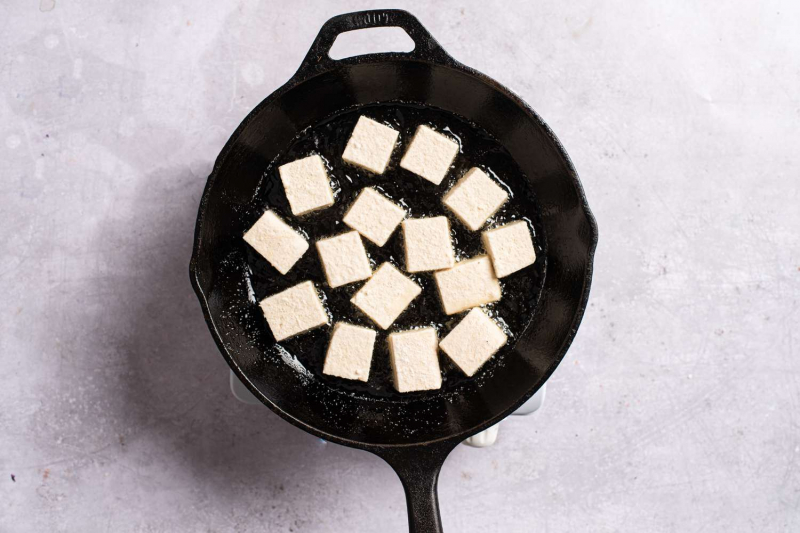
-
Turn the tofu over and fry for another two to three minutes on the second side until golden and crisp. The texture will look slightly rough, and the rice flour will look almost like sand. Transfer the fried tofu back to the baking tray and fry the rest of the tofu.

-
When all the tofu is fried, pour any remaining oil out of the wok, leaving a light coating of oil. If there is a lot of rice flour in the wok carefully wipe it out with a wadded paper towel or kitchen towel and add a tablespoon of fresh oil.
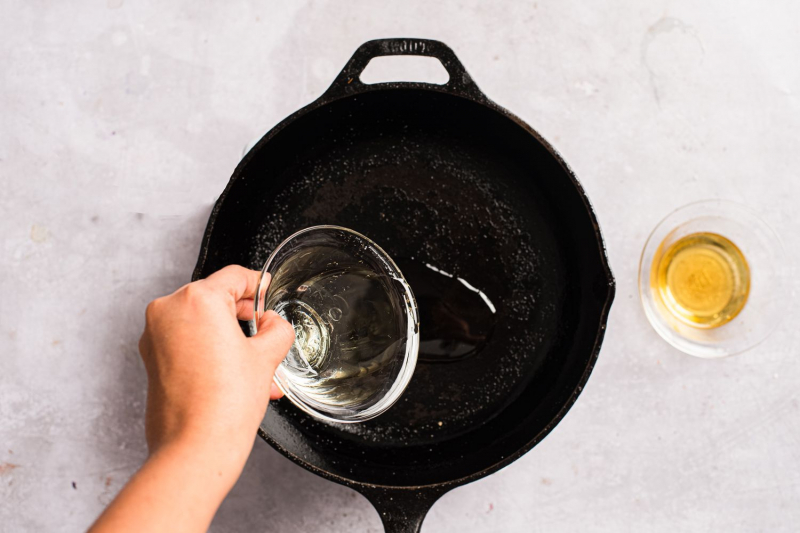
-
Lower the heat to medium-low and add the ginger and garlic. Cook until they smell fragrant and the garlic is starting to look golden.
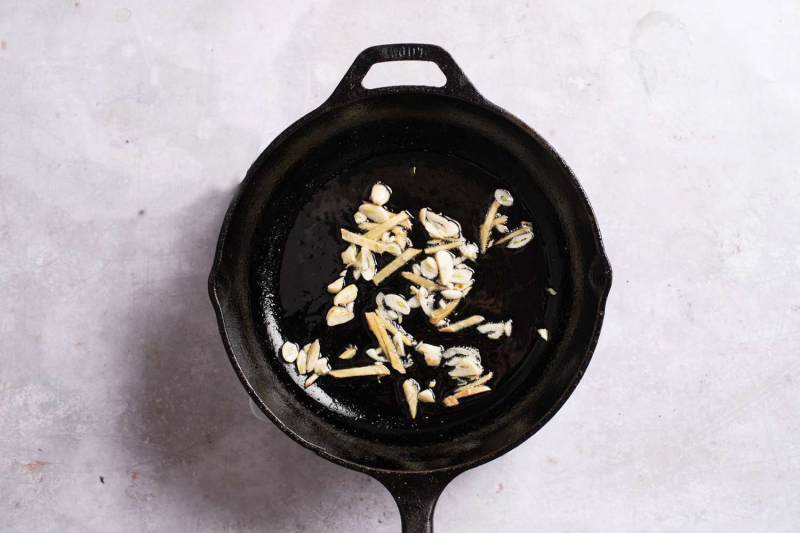
-
Add the coriander to the wok and cook stirring, until the coriander smells fragrant. Continue to cook, stirring until the garlic is lightly browned.

-
Carefully add the orange juice and sambal mixture to the hot wok and stir to scrape up any cooked bits from the bottom of the pan. Simmer the mixture until it has reduced by about one quarter.

-
Stir the miso into 1/4 cup water and stir it into the liquid in the wok.
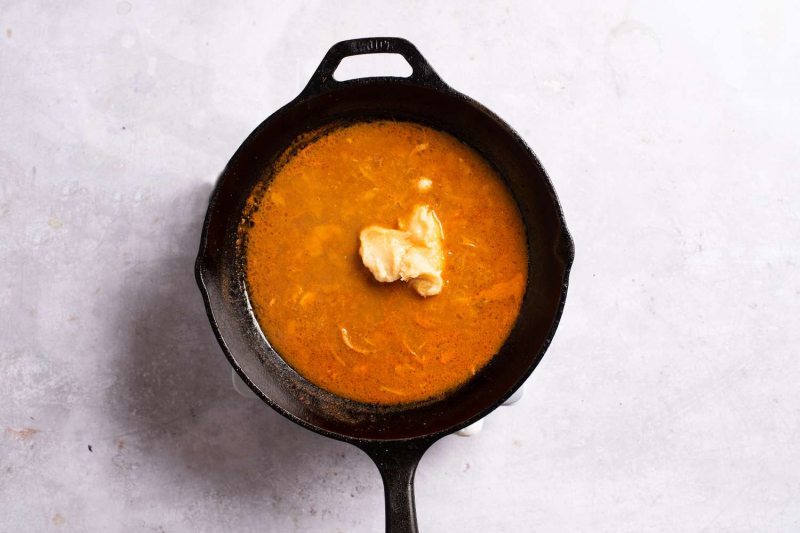
-
Add the fried tofu back to the pan and turn it so that it is completely covered in sauce. Set the temperature to low and cover the pan. Cook until the tofu has absorbed some of the sauce and the sauce has thickened to the consistency of a gravy, about 5 minutes.
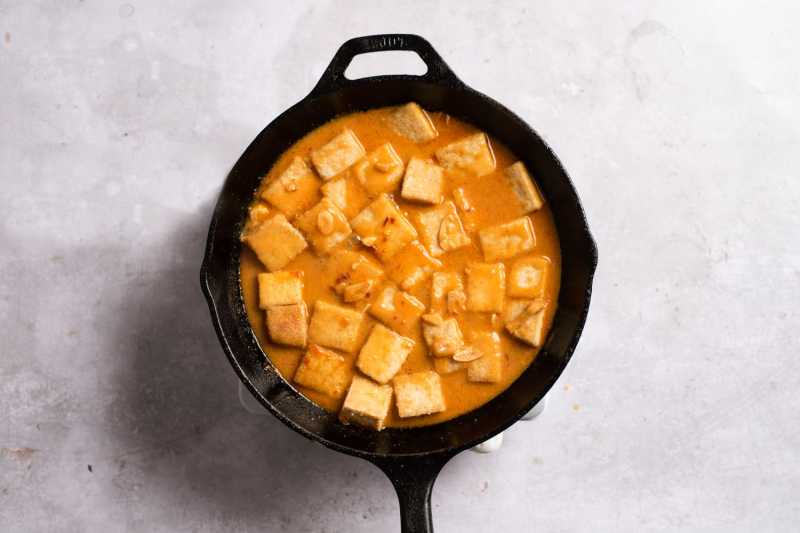
-
Transfer the tofu and sauce to a serving dish and garnish with fresh orange slices, if using, and fresh cilantro.
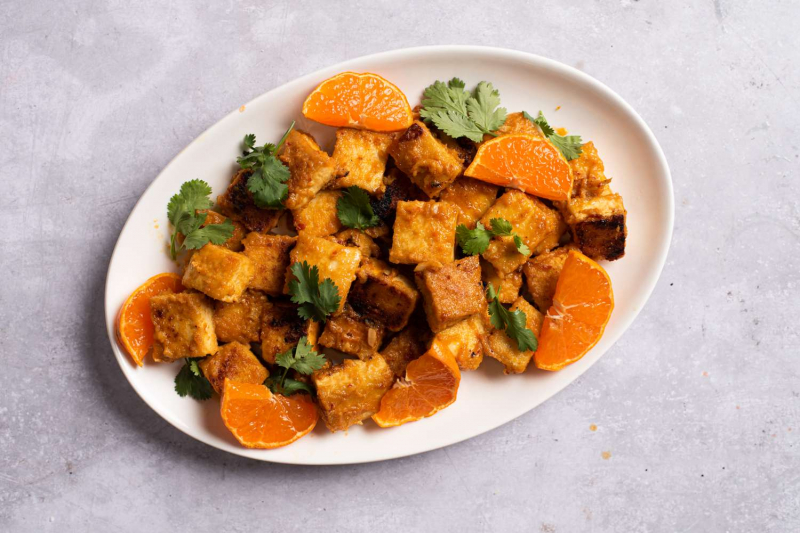
How to Store
Store leftover tofu in an airtight container in the refrigerator for up to 5 days. Reheat gently in a skillet with a splash of water.
Feeling Adventurous? Try This:
- Use brown rice flour—Brown rice flour will work as a substitute for sweet white rice flour.
- Citrus substitutes—The recipe can be made with tangerines, blood oranges, or any other sweet, juicy citrus fruit.
- Other kinds of miso—White miso is a sweet, lightly fermented miso with a creamy texture. It works well in this braise because it is suited to short cooking time and it adds a natural sweetness and umami while thickening the sauce. Any type of miso paste can be used in its place, though darker miso varieties will add a more robust flavor.
| Nutrition Facts | |
|---|---|
| Servings: 4 | |
| Amount per serving | |
| Calories | 367 |
| % Daily Value* | |
| Total Fat 28g | 36% |
| Saturated Fat 3g | 14% |
| Cholesterol 0mg | 0% |
| Sodium 245mg | 11% |
| Total Carbohydrate 15g | 5% |
| Dietary Fiber 3g | 10% |
| Total Sugars 4g | |
| Protein 19g | |
| Vitamin C 18mg | 91% |
| Calcium 500mg | 38% |
| Iron 4mg | 22% |
| Potassium 371mg | 8% |
| *The % Daily Value (DV) tells you how much a nutrient in a food serving contributes to a daily diet. 2,000 calories a day is used for general nutrition advice. | |
